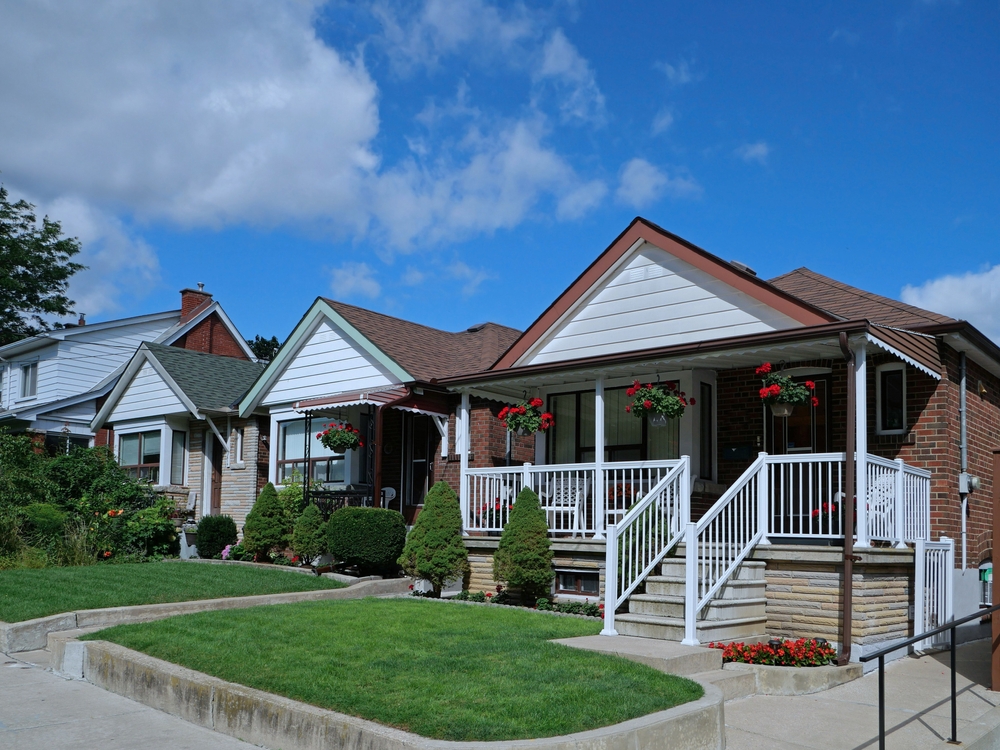Rent to own is often discussed as a solution for low-income earners who want to get into a home. However, rent to own is also ideal for members of the middle class. Middle class families and individuals face a lot of pressures: they make enough to pay a significant amount of taxes, but they’re often also under financial strain from other sources: the cost of healthcare, college education needs, and increasingly high rent. it’s specifically difficult to save 3.5 percent or more as a down payment for an FHA or other type of home loan with the prices of rent and gas always in flux.
What is Middle Class in America?

Members of the middle class made an income between $43,350 and $130,000. This varies greatly because factors like size of family and cost of living per location dramatically affect how far a dollar will go for each person. In most locations, $100,000 would put an individual income earner in the upper-income level, but that isn’t true for all locations (just look at the cost of living in California, Northern Virginia, Boston, or New York City).
If that six-figure salary is supporting a family, however, it’s likely to land you in the middle-class zone. Life can also “feel” more or less middle class by less technical markers. If you have a savings account and a retirement account but aren’t flush, your life might feel really middle class. And people in this situation often struggle with the affordability of living situations.
3 Reasons Why Rent to Own is More Accessible Than an FHA Loan for Many Middle Class Families
FHA Loan down payment requirements are comparatively reasonable when you’re also looking at other options. Even so, especially if you have multiple household members and need an office as a remote employee, you’re looking at expensive housing when it comes time for you to own. If you do the math, it’s likely you’ll find that over the long term, owning a home is more valuable because you have equity in it — it’s an asset that you can pass down to your children or re-mortgage in the event of an emergency, such as a new roof or medical concern.
1. FHA Loan Requirements

FHA Loan requirements price some middle class home buyers out of the market. A Federal Housing Authority (FHA) loan can go as low as 3.5 percent, but with the inflated cost of housing in a hot market, that’s still not affordable or achievable for many people. Take someone supporting or co-supporting a family, or an individual who wants to buy a home on their own. These living situations make it tough for a middle class person to have the extra money, especially while renting at high prices.
In a rent to own arrangement, there is not typically a down payment. Instead, the money you pay towards rent (which will be higher compared to standard leasing agreements) covers that pesky down payment amount and some of the interest.
2. Bad Credit and Credit Card Debt
Being formerly poor is slightly better than being poor. You have money to cover your expenses, but your past financial troubles haunt you every day in the form of collection services and credit card debt with high interest. It’s hard to save, cover moving expenses, and consider more affordable permanent housing options when you’re committed to fixing your finances and establishing more responsible finances and financial practices. You know the right move is to own a home, but you’re hindered in achieving it due to the bad credit and credit card debt.
This makes an FHA loan hard, because you need a score of at least 580 (no matter your current income) to qualify for that 3.5 percent loan. If your credit score is 500 to 579, you can still qualify, but you have to put 10 percent down. Imagine having a spare $50,000 lying around to get that half-million dollar house for your family of four. It’s challenging.
With a rent to own option, you’ll have time to rebuild and repair your credit while paying slightly higher rent in most situations — but the “extra” goes towards the down payment on the house you’ll eventually own via your agreement. It’s way better than regular renting if you’re committed to owning the property eventually.
3. School Locations and Remote Workforce

If you’re committed to keeping your child in the same school district and your school-aged home residents are young, rent-to-own makes sense because you’re staying in the same location. Instead of having to deal with moving from time to time due to the nature of rentals (especially with houses, where landlords will sell when the market is hot), you won’t risk being booted from your home in your child’s school district. Without the burden of the FHA Loan down payment, you can also afford to provide your school-aged kids with everything they need.
If you’re a remote worker, you may be able to choose your location with some or no restrictions, which makes rent to own an ideal option versus renting. You can have the stability of staying in one location, and changing jobs remotely isn’t a big deal when you don’t have to move for the job. Rent to own provides you with the opportunity to engage in credit repair while you rent — and in the end, you have equity.
Consider Rent to Own
Being middle class in America is rough. You carry a fair amount of the tax burden placed on Americans, which is frustrating when you’re trying to get out of a renting cycle that requires frequent moving and moving costs, and paying into something you’ll never own. Especially if you’re new to the income bracket, you’ll have to overcome past challenges that can prevent you from getting a down payment together.
Rent to own agreements can put you on the path to home ownership, and in some instances, your insurance cost could be bundled into the payment. You might find yourself wondering where to go from a low income housing situation or what move you can make considering the difficulty of a down payment — and if so, rent to own could be the answer for you.






